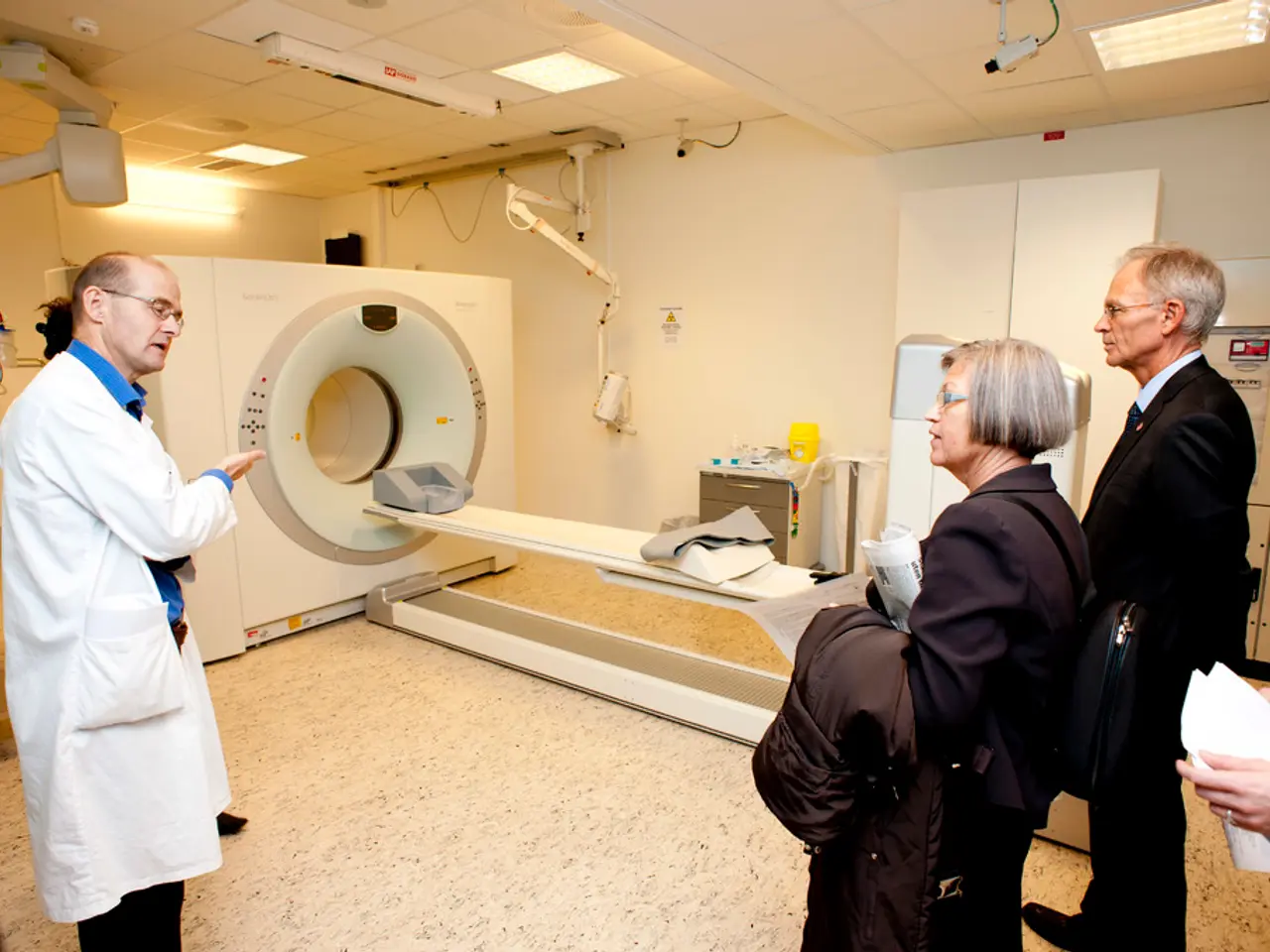Radiotherapy in the Management of Follicular Lymphoma
In a recent study conducted at a tertiary institution, the survival rates for follicular lymphoma (FL) patients treated with radiotherapy, particularly those with primary ocular adnexal follicular lymphoma, have been found to be generally favourable [1]. The study, which analysed 177 FL patients registered from 1996 to 2011, aimed to describe the overall treatment patterns of FL and focus on the outcomes of radiotherapy treatment in this group of patients.
The key factors contributing to improved survival rates in FL patients treated with radiotherapy include early-stage disease, localized disease, positive response to treatment, good overall health, absence of histological transformation, and sometimes the use of combination therapies [2][3].
Patients with early-stage FL tend to have better outcomes, with radiotherapy often being effective as a standalone treatment for localized disease [3]. The effectiveness of radiotherapy is higher when the disease is localized, allowing for targeted treatment with minimal side effects [3]. Additionally, patients who show a complete response to initial radiotherapy generally have better outcomes, as additional treatments may not be required following a complete response [2].
Younger patients and those with better overall health tend to have better outcomes with cancer treatments, including radiotherapy [3]. The absence of histological transformation, i.e., the lymphoma not changing into a more aggressive form, is crucial for maintaining favourable outcomes [1]. In some cases, combining radiotherapy with other treatments like immunotherapy or chemotherapy may enhance outcomes by addressing potential microscopic disease more effectively [3].
Despite the effectiveness of radiotherapy in early-stage FL, it is often underused in favour of other treatments like chemotherapy, combined treatment modalities, or initial observation [4]. However, the study found no in-field alone relapses in all cases treated with radiotherapy [4].
In the advanced stage of FL, a watch-and-wait strategy can be an option for asymptomatic patients with low tumour burden, while symptom control becomes the main focus for symptomatic and bulky tumours, with multimodality treatment including immunotherapy, chemotherapy, and radiotherapy usually recommended [5]. Radiotherapy may also be considered for consolidation after systemic therapy in either incomplete or complete responders with initial bulky disease or in the palliative setting [5].
In the advanced stage, the 5-year and 10-yr progression-free survival were 57% and 40% respectively, while the median overall survival was 12.9 years, with 5-year and 10-year overall survival rates of 77% and 63% respectively [6]. The treatment of stage 2 disease is still controversial, with some treating it as localized and others as advanced disease [7].
With modern imaging techniques, improved staging of patients and better volume delineation for more conformal radiotherapy treatment with reduced toxicity can be achieved [8]. The study found no G3-4 acute toxicities with consolidation radiotherapy in the advanced stage, and only one G3 with salvage radiotherapy [6].
In conclusion, radiotherapy plays a significant role in the treatment of follicular lymphoma, particularly in early-stage disease. By understanding the factors associated with improved outcomes, doctors can make informed decisions about the most effective treatment options for their patients.
Science has shown that early-stage follicular lymphoma (FL) patients, who undergo radiotherapy, often experience favorable medical-conditions, thanks to key factors such as localized disease, positive response to treatment, good overall health, and the absence of histological transformation [1][2][3]. In some cases, combination therapies, involving radiotherapy with immunotherapy or chemotherapy, can further enhance these health-and-wellness benefits [3].




